pirates
 Pirates!! Men who sail the seas in search of prey…ships filled with loot, or even just people’s possessions. That is a fact, but not all pirates were, or are, men. In fact, the most successful pirate was a woman. Ching Shih was born in 1775 in Guangdong, China. She actually started out as a prostitute in China. Then her life changed. The Commander of the pirate band, the Red Flag Fleet, Cheng I (Zheng Yi), bought and married her. That could have been viewed as a terrible event in her life, but when you consider where she started, maybe not. Her new husband could have been abusive to her, but rather than just viewing her as a wife, he considered her his equal and she
Pirates!! Men who sail the seas in search of prey…ships filled with loot, or even just people’s possessions. That is a fact, but not all pirates were, or are, men. In fact, the most successful pirate was a woman. Ching Shih was born in 1775 in Guangdong, China. She actually started out as a prostitute in China. Then her life changed. The Commander of the pirate band, the Red Flag Fleet, Cheng I (Zheng Yi), bought and married her. That could have been viewed as a terrible event in her life, but when you consider where she started, maybe not. Her new husband could have been abusive to her, but rather than just viewing her as a wife, he considered her his equal and she 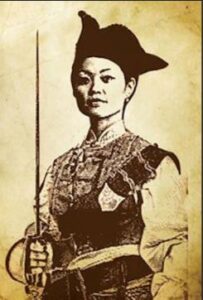 became an active pirate commander in the fleet. Ok, being a pirate was probably not the greatest career she could have had, but it was better than her past…to a degree anyway.
became an active pirate commander in the fleet. Ok, being a pirate was probably not the greatest career she could have had, but it was better than her past…to a degree anyway.
Her marriage came with the promise to cede to her the control of half of his pirate fleet and business. I’m sure the pirate gang were wondering what her husband was thinking, but Ching Shih soon earned the respect of her fellow pirates…no small feat for a woman. The other men may not have liked it at first, but by the time Ching Shih’s husband died, they trusted her completely…so much so, in fact, that she became the captain of the fleet. That was actually huge for Ching Shih, and under her leadership, the Red Flag Fleet grew to over 300 warships, with a possible 1,200 more support ships. She even had a possible 40,000 – 80,000 men, women, and  children, all of whom counted on her for their “living.” I guess you could call pirating a living…as much as bank robbery, I suppose.
children, all of whom counted on her for their “living.” I guess you could call pirating a living…as much as bank robbery, I suppose.
Over the years that Ching Shih ran the Red Flag Fleet, they terrorized the waters around China. She soon became known as the “Terror of South China.” The government tried their best to take down the ruthless pirates, but they were totally unsuccessful. Ching Shih was so good at what she did, that the Chinese government was at a loss to stop the band of pirates. Finally, she suffered a series of defeats at the hands of the Portuguese Navy, but the Qing imperial government chose to allow her band to keep the wealth gained from piracy, provided she retire in peace. She agreed, and the Chinese government pardoned Ching Shih and her entire fleet…just to get them off the high seas!! To this day, she is believed to be the most notorious, and the most successful pirate in history. Ching Shih died in 1844 in Guangdong, China. She was 69 years old.
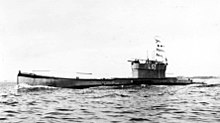 Over the years, ships that sailed the high seas, were faced with a number of perils, among them the biggest human danger there was…pirates. No area of the globe was particularly more dangerous than another, and no area was immune to attack, as was seen on October 19, 1927, when the Chinese steamer, SS Irene was on a voyage from Shanghai to Amoy with 258 passengers and crew. As she set out, she was taken over by pirates masquerading as passengers on that Wednesday. After boarding, the pirates quickly seized control of the ship and headed out to sea.
Over the years, ships that sailed the high seas, were faced with a number of perils, among them the biggest human danger there was…pirates. No area of the globe was particularly more dangerous than another, and no area was immune to attack, as was seen on October 19, 1927, when the Chinese steamer, SS Irene was on a voyage from Shanghai to Amoy with 258 passengers and crew. As she set out, she was taken over by pirates masquerading as passengers on that Wednesday. After boarding, the pirates quickly seized control of the ship and headed out to sea.
It was then that two L-class British submarines intercepted the vessel and demanded that they halt and surrender. The two submarines were based off Mendoza Island (now Shenggao Island) at the entrance of the bay. Upon their arrival, they had been ordered to split up. L4 went to patrol around the entrance of the bay and L5 was ordered to patrol within. It was at this point that they encountered the SS Irene. Pirates are a bull-headed group, and they aren’t afraid of very much. They are after all, outlaws, and that makes them a tough bunch. The pirates refused to surrender, and the submarines were ordered to fire. They fired two torpedoes into the ships hold. Even after being hit, the pirates continued to try to make it to shore, but they had been too badly damaged. Finally, they began to abandon ship. At this point, the ship stopped, but it was already beginning to sink. The British submarines then rescued the passengers and crew.
The Irene incident of 1927 was a significant event of the British anti-piracy operations in China during the first half of the 20th century. It was part of a British attempt to surprise the pirates of Bias Bay, about sixty miles from Hong Kong. 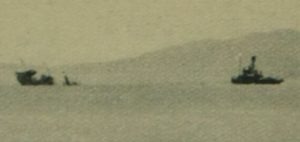 Royal Navy submarines were sent to stop the pirates, and the merchant ship SS Irene, of the China Merchants Steam Navigation Company, which had been taken over by the pirates on the night of October 19th was one if the first. The British were successful in thwarting the hijacking though they sank the ship. Sometimes, drastic measures must be taken in order to bring about the necessary changes. While we don’t hear about it as much, piracy still exists today. There may again come a time when drastic measures must be taken, and I know the authorities will do what has to be done.
Royal Navy submarines were sent to stop the pirates, and the merchant ship SS Irene, of the China Merchants Steam Navigation Company, which had been taken over by the pirates on the night of October 19th was one if the first. The British were successful in thwarting the hijacking though they sank the ship. Sometimes, drastic measures must be taken in order to bring about the necessary changes. While we don’t hear about it as much, piracy still exists today. There may again come a time when drastic measures must be taken, and I know the authorities will do what has to be done.

 For my nephew, Shannon, Moore, life has taken some big route changes recently. Of course, he biggest change is that Shannon became a daddy to daughter, Mackenzie Rose, on September 12, 2017. Shannon is a great daddy, and I totally taken by his little girl. She is his little princess, and he is totally wrapped around her little finger. Of course, Mackenzie has an adorable face, and she is always smiling, so it’s not hard to get wrapped around her little finger. Shannon loves every part of dad life. Many men aren’t so sure about things like diapers and such, but He is incredibly hands on. Whatever Mackenzie needs, Shannon is ready to provide. He handles diapers, feedings, comforting, all with ease.
For my nephew, Shannon, Moore, life has taken some big route changes recently. Of course, he biggest change is that Shannon became a daddy to daughter, Mackenzie Rose, on September 12, 2017. Shannon is a great daddy, and I totally taken by his little girl. She is his little princess, and he is totally wrapped around her little finger. Of course, Mackenzie has an adorable face, and she is always smiling, so it’s not hard to get wrapped around her little finger. Shannon loves every part of dad life. Many men aren’t so sure about things like diapers and such, but He is incredibly hands on. Whatever Mackenzie needs, Shannon is ready to provide. He handles diapers, feedings, comforting, all with ease.
Shannon loves to do woodworking. He has spent a lot of time this summer on projects around their house. For about a month, Lindsay and Mackenzie came to Wyoming for a visit, and Shannon too that opportunity to create a surprise for Lindsay…and brand new deck. Lindsay was so surprised, and she says it’s just gorgeous!! He also built a some new chairs to go with it!! Shannon likes to keep busy with all the little woodworking projects he has going. Woodworking is a great hobby.
Shannon is a coach for the Eastern Carolina University Pirates football team, and is entering his third season. He has been the special teams coach, but this year he is the tight ends coach and recruiting coordinator. Coaching any area of football is something, Shannon has done, but Recruiting Coordinator is a new position for him. Nevertheless, like everything he does, Shannon will excel it too. Lindsay says that it really is his element! Organization and getting to know people! And that is something we all knew. Shannon is a very social person, 
 and can strike up a conversation with just about anyone.
and can strike up a conversation with just about anyone.
While Shannon loves his job and meeting people, his heart is always at home with his girls. The first time I met Shannon, I could see just how deep his love for Lindsay was,and now that they have their sweet little daughter, I can see that his life is complete…well, at least until the next baby comes along, down the road. Then, both he and Lindsay will wonder how they ever managed without that baby too…just like they have felt with Mackenzie. The great thing about being parents, is that with each new baby, the love just grows bigger and bigger. There is always room for more. Today is Shannon’s birthday. Happy birthday Shannon!! Have a great day!! We love you!!
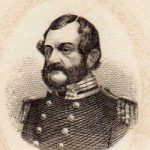 Captain George Hollins joined the United States Navy when he was just 15 years old, and served during the War of 1812. His was a long and distinguished career, but when the Civil War broke out in 1861, he chose to resign his commission, and offer his services to the Confederacy. After a brief stop in his hometown, Baltimore, Hollins offered his services to the Confederacy and received a commission on June 21, 1861. I suppose that every man had to choose a side in the Civil War, and I’m sure he considered his reasons for choosing the Confederacy to be valid, but many of us would consider his actions to be almost traitorous, were it not for the fact that both sides were the United States…just not so united.
Captain George Hollins joined the United States Navy when he was just 15 years old, and served during the War of 1812. His was a long and distinguished career, but when the Civil War broke out in 1861, he chose to resign his commission, and offer his services to the Confederacy. After a brief stop in his hometown, Baltimore, Hollins offered his services to the Confederacy and received a commission on June 21, 1861. I suppose that every man had to choose a side in the Civil War, and I’m sure he considered his reasons for choosing the Confederacy to be valid, but many of us would consider his actions to be almost traitorous, were it not for the fact that both sides were the United States…just not so united.
Hollins devised a plan to capture a commercial vessel that was bringing supplies to the Union Army. Then they planned to use that ship to lure other Union ships into Confederate service. Soon after, Hollins met up with Richard Thomas Zarvona, a fellow Marylander and former student at West Point. Zarvona 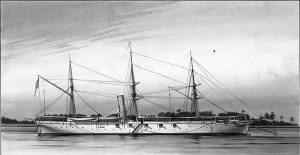 was an adventurer who had fought with pirates in China and revolutionaries in Italy. He seemed the perfect co-conspirator for this project. They devised a plan to capture the Saint Nicholas. Then it would be the decoy they used to force other Yankee ships into Confederate service. Zarvona went to Baltimore,where he recruited a band of pirates, who boarded the Saint Nicholas as paying passengers on June 28, 1862. Using the name Madame La Force, Zarvona disguised himself as a flirtatious French woman. Hollins boarded the Saint Nicholas at its first stop.
was an adventurer who had fought with pirates in China and revolutionaries in Italy. He seemed the perfect co-conspirator for this project. They devised a plan to capture the Saint Nicholas. Then it would be the decoy they used to force other Yankee ships into Confederate service. Zarvona went to Baltimore,where he recruited a band of pirates, who boarded the Saint Nicholas as paying passengers on June 28, 1862. Using the name Madame La Force, Zarvona disguised himself as a flirtatious French woman. Hollins boarded the Saint Nicholas at its first stop.
A while later the band of co-conspirators went to the “French woman’s” cabin. Inside, they armed themselves and came back out on the deck to surprise the crew. After 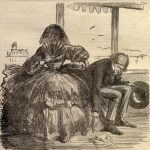 capturing the crew, Hollins took control of the ship. At this point, the purpose of their mission began. They had planned to capture a Union gunboat, the Pawnee, but it was called away. Instead, the Saint Nicholas and its pirate crew came upon a ship loaded with Brazilian coffee, and two more ships, carrying loads of ice and coal. Both ships quickly fell to the Saint Nicholas. For his actions, Hollins received a promotion to commodore and was sent to New Orleans to command the naval forces there at the end of July. On July 8, he would try another daring mission, to capture the Columbia, a sister ship of the Saint Nicholas, but the captain of the Saint Nicholas was on board the Columbia, on his way home after being released by the Confederate authorities. He recognized the men and they were arrested. It was the end of his tirade.
capturing the crew, Hollins took control of the ship. At this point, the purpose of their mission began. They had planned to capture a Union gunboat, the Pawnee, but it was called away. Instead, the Saint Nicholas and its pirate crew came upon a ship loaded with Brazilian coffee, and two more ships, carrying loads of ice and coal. Both ships quickly fell to the Saint Nicholas. For his actions, Hollins received a promotion to commodore and was sent to New Orleans to command the naval forces there at the end of July. On July 8, he would try another daring mission, to capture the Columbia, a sister ship of the Saint Nicholas, but the captain of the Saint Nicholas was on board the Columbia, on his way home after being released by the Confederate authorities. He recognized the men and they were arrested. It was the end of his tirade.
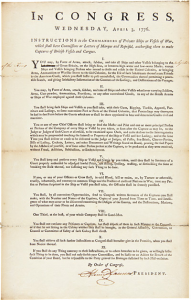 When the United States, still known as the colonies at that time, it lacked sufficient funds to build a strong navy, and with the coming Revolutionary War, they needed that strength. So, the Continental Congress gave privateers permission to attack any and all British ships. What is a privateer, you might ask? A privateer is a private person or ship that engages in maritime warfare under a commission of war.
When the United States, still known as the colonies at that time, it lacked sufficient funds to build a strong navy, and with the coming Revolutionary War, they needed that strength. So, the Continental Congress gave privateers permission to attack any and all British ships. What is a privateer, you might ask? A privateer is a private person or ship that engages in maritime warfare under a commission of war.
In a bill signed by John Hancock, president of the Continental Congress, and dated April 3, 1776, the Continental Congress issued, “INSTRUCTIONS to the COMMANDERS of Private Ships or vessels of War, which shall have Commissions of Letters of Marque and Reprisal, authorizing them to make Captures of British Vessels and Cargoes.” Letters of Marque and Reprisal were the official documents by which 18th century governments commissioned private commercial ships, known as privateers, to act on their behalf, attacking ships carrying the flags of enemy nations. As a perk, any goods captured by the privateer were divided between the ship’s owner and the government that had issued the letter.
Congress informed American privateers on this day that, “YOU may, by Force of Arms, attack, subdue, and take all Ships and other Vessels belonging to the Inhabitants of Great Britain, on the high seas, or between high-water and low-water Marks, except Ships and Vessels bringing Persons who intend to settle and reside in the United Colonies, or bringing Arms, Ammunition or Warlike Stores to the said Colonies, for the Use of such Inhabitants thereof as are Friends to the American Cause, which you shall suffer to pass unmolested, the Commanders thereof permitting a peaceable Search, and giving satisfactory Information of the Contents of the Ladings, and Destinations of the Voyages.” In many ways, this action was very similar to guerrilla warfare, except it was a battle fought on the high seas, and unlike guerrillas, these men were acting under the authority of the government…even if both were fighting for their nation.
For those who faced them on the high seas, there was no difference between pirates and privateers. They 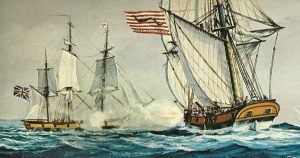 acted and operated identically, boarding and capturing ships using force, if necessary. However, privateers holding Letters of Marque were not subject to prosecution by their home nation and, if captured, were treated as prisoners of war instead of criminals by foreign nations. I wonder if their were actually pirates among he privateers. To me, it would make sense to believe that their were, but perhaps the government would not authorize known pirates to do this work. Either way, the privateer commission was a very successful form of warfare in the Revolutionary War days.
acted and operated identically, boarding and capturing ships using force, if necessary. However, privateers holding Letters of Marque were not subject to prosecution by their home nation and, if captured, were treated as prisoners of war instead of criminals by foreign nations. I wonder if their were actually pirates among he privateers. To me, it would make sense to believe that their were, but perhaps the government would not authorize known pirates to do this work. Either way, the privateer commission was a very successful form of warfare in the Revolutionary War days.
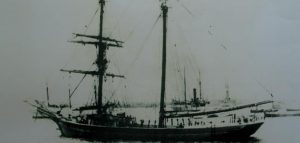 The Mary Celeste began its fateful voyage on November 7, 1872. She set sail with seven crewmen and Captain Benjamin Spooner Briggs, his wife, Sarah, and the couple’s 2-year-old daughter, Sophia. The 282 ton brigantine battled heavy weather for two weeks to reach the Azores. It was there that the ship logged its last entry at 5am on November 25, 1872. The rest of the story of the Mary Celeste remains a mystery, although the ship was found in good shape and completely sea-worthy.
The Mary Celeste began its fateful voyage on November 7, 1872. She set sail with seven crewmen and Captain Benjamin Spooner Briggs, his wife, Sarah, and the couple’s 2-year-old daughter, Sophia. The 282 ton brigantine battled heavy weather for two weeks to reach the Azores. It was there that the ship logged its last entry at 5am on November 25, 1872. The rest of the story of the Mary Celeste remains a mystery, although the ship was found in good shape and completely sea-worthy.
I find it strange to think that in the middle of the ocean, something can happen with little or no warning, that either takes the lives of people onboard a ship, or results in their disappearance. I understand mutiny, but then that does not leave a ship abandoned. So if not mutiny, how is it that the occupants of the ship did not see the other ship approaching? I know that pirates often overtook the ships, but the occupants of the ship were usually killed in a bloody battle. The people onboard did not just disappear. Nevertheless, something happened on the Mary Celeste between that final message on November 25, 1872 and December 5th, 1872, when she was spotted drifting along, in the Atlantic Ocean…empty.
The British brig Dei Gratia was about 400 miles east of the Azores on December 5, 1872, when crew members spotted a ship adrift in the choppy seas. Captain David Morehouse was shocked to discover that the unguided vessel was the Mary Celeste. It had left New York City eight days before him and should have already arrived in Genoa, Italy. He changed course to offer help. Morehouse sent a boarding party to the ship. When they went below decks, they discovered that the ship’s charts had been tossed about, and the crewmen’s belongings were still in their quarters. The ship’s only lifeboat was missing, and one of its two pumps had been disassembled. Three and a half feet of water was sloshing in the ship’s bottom, but the cargo of 1,701 barrels of industrial alcohol was largely intact. There was a six month supply of food and water…and no one to use it. So, the mystery began, and it has endured as one of the most durable mysteries in nautical history…What happened to the ten people who had sailed aboard the Mary Celeste? Over the many years since the discovery, a lack of hard evidence has only created more speculation as to what might have taken place. Theories have ranged from mutiny to pirates to sea monsters to killer waterspouts….some of which are completely ridiculous, but in the absence of evidence, people will speculate.
Arthur Conan Doyle’s 1884 short story based on the case posited a capture by a vengeful ex-slave, a 1935 movie featured Bela Lugosi as a homicidal sailor. Now, a new investigation, drawing on modern maritime technology and newly discovered documents, has pieced together the most likely scenario…which had nothing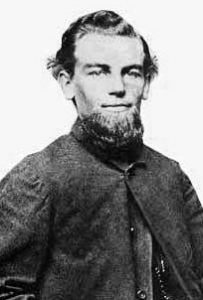 to do with Bela Lugosi. In fact, while it is unproven, it is thought that something a simple as coal dust could be the culprit. The idea is that the coal dust from a prior voyage filtered into the ships pumps, causing them to quit working. Then, it is thought that the captain, fearing that the ship would sink, ordered the passengers to abandon ship…well within sight of land at Azores. Anne MacGregor, the documentarian who launched the investigation and wrote, directed and produced The True Story of the ‘Mary Celeste,’ partly with funding from Smithsonian Networks. MacGregor learned that on its previous voyage, the Mary Celeste had carried coal and that the ship had recently been extensively refitted. Coal dust and construction debris could have fouled the ship’s pumps, which would explain the disassembled pump found on the Mary Celeste. With the pump inoperative, Briggs would not have known how much seawater was in his ship’s hull, which was too fully packed for him to measure visually. Of course, this is still speculation, because the ten people onboard were never heard from again, so the mystery continues.
to do with Bela Lugosi. In fact, while it is unproven, it is thought that something a simple as coal dust could be the culprit. The idea is that the coal dust from a prior voyage filtered into the ships pumps, causing them to quit working. Then, it is thought that the captain, fearing that the ship would sink, ordered the passengers to abandon ship…well within sight of land at Azores. Anne MacGregor, the documentarian who launched the investigation and wrote, directed and produced The True Story of the ‘Mary Celeste,’ partly with funding from Smithsonian Networks. MacGregor learned that on its previous voyage, the Mary Celeste had carried coal and that the ship had recently been extensively refitted. Coal dust and construction debris could have fouled the ship’s pumps, which would explain the disassembled pump found on the Mary Celeste. With the pump inoperative, Briggs would not have known how much seawater was in his ship’s hull, which was too fully packed for him to measure visually. Of course, this is still speculation, because the ten people onboard were never heard from again, so the mystery continues.
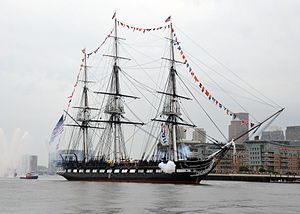 I think most of us have heard of the Barbary Coast at some point. The coast was named for its Berber inhabitants, but it was the trouble that occurred there that has made it a name to remember. The Barbary pirates, who were sometimes called Barbary corsairs or Ottoman corsairs, were pirates and privateers who operated from North Africa, mostly near the ports of Salé, Rabat, Algiers, Tunis, and Tripoli, which is now the area known as the Barbary Coast. In addition to seizing ships, they engaged in Razzias, raids on European coastal towns and villages, mainly in Italy, France, Spain, and Portugal, but also in the British Isles, the Netherlands and as far away as Iceland. Their main goal was to capture Christian slaves for the Ottoman slave trade, as well as the general Arabic market in North Africa and the Middle East. The pirates captured thousands of ships and repeatedly raided coastal towns.
I think most of us have heard of the Barbary Coast at some point. The coast was named for its Berber inhabitants, but it was the trouble that occurred there that has made it a name to remember. The Barbary pirates, who were sometimes called Barbary corsairs or Ottoman corsairs, were pirates and privateers who operated from North Africa, mostly near the ports of Salé, Rabat, Algiers, Tunis, and Tripoli, which is now the area known as the Barbary Coast. In addition to seizing ships, they engaged in Razzias, raids on European coastal towns and villages, mainly in Italy, France, Spain, and Portugal, but also in the British Isles, the Netherlands and as far away as Iceland. Their main goal was to capture Christian slaves for the Ottoman slave trade, as well as the general Arabic market in North Africa and the Middle East. The pirates captured thousands of ships and repeatedly raided coastal towns.
In order to combat the Barbary pirates, the United States Navy built the USS Constitution, which was a 44 gun 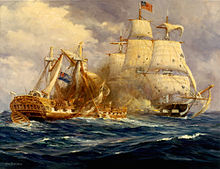 frigate. It was first launched on this day, October 21, 1797, from Boston Harbor. The USS Constitution performed well fighting off pirates in the area, and in 1805, a peace treaty was signed on her deck. When the conflict was over, the ship returned and to its base in Boston. I’m sure the pirates knew full well, that it would return if needed. The ship didn’t have to go back and flex it’s muscle again…at least not there.
frigate. It was first launched on this day, October 21, 1797, from Boston Harbor. The USS Constitution performed well fighting off pirates in the area, and in 1805, a peace treaty was signed on her deck. When the conflict was over, the ship returned and to its base in Boston. I’m sure the pirates knew full well, that it would return if needed. The ship didn’t have to go back and flex it’s muscle again…at least not there.
During the War of 1812, the USS Constitution won its nickname, Old Ironsides, after defeating the British warship, Guerriére in a furious battle off the coast of Nova Scotia. It was said that the British shots just bounced off the sides of the USS Constitution, as if they were made of iron, rather than wood, The Guerriére was thought to be invincible, but that was proven to be a fallacy. On the afternoon of 19 August 1812, about 400 miles southeast of Halifax, Nova Scotia, the Guerriére saw a sail in the distance, bearing down 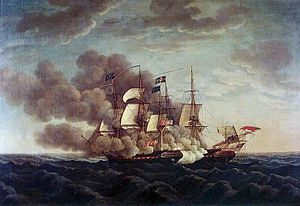 on them. It was the USS Constitution, so the Guerriére prepared for action. Captain James Dacres mustered 244 men and 19 boys, and set them to prepare for battle. When the enemy hoisted American colors, Captain Dacres permitted the Americans in his crew to quit their guns. When the fight was over, nine men were killed and thirteen were wounded. Captain Dacres surrendered his badly damaged ship in an effort to save the lives of the remaining crew, the crew were taken prisoner, and the crew of the USS Constitution set the ship on fire. That was the end of the Guerriére, and Old Ironsides was born. The USS Constitution was retired from service in 1881, and served as a receiving ship until designated a museum ship in 1907.
on them. It was the USS Constitution, so the Guerriére prepared for action. Captain James Dacres mustered 244 men and 19 boys, and set them to prepare for battle. When the enemy hoisted American colors, Captain Dacres permitted the Americans in his crew to quit their guns. When the fight was over, nine men were killed and thirteen were wounded. Captain Dacres surrendered his badly damaged ship in an effort to save the lives of the remaining crew, the crew were taken prisoner, and the crew of the USS Constitution set the ship on fire. That was the end of the Guerriére, and Old Ironsides was born. The USS Constitution was retired from service in 1881, and served as a receiving ship until designated a museum ship in 1907.

